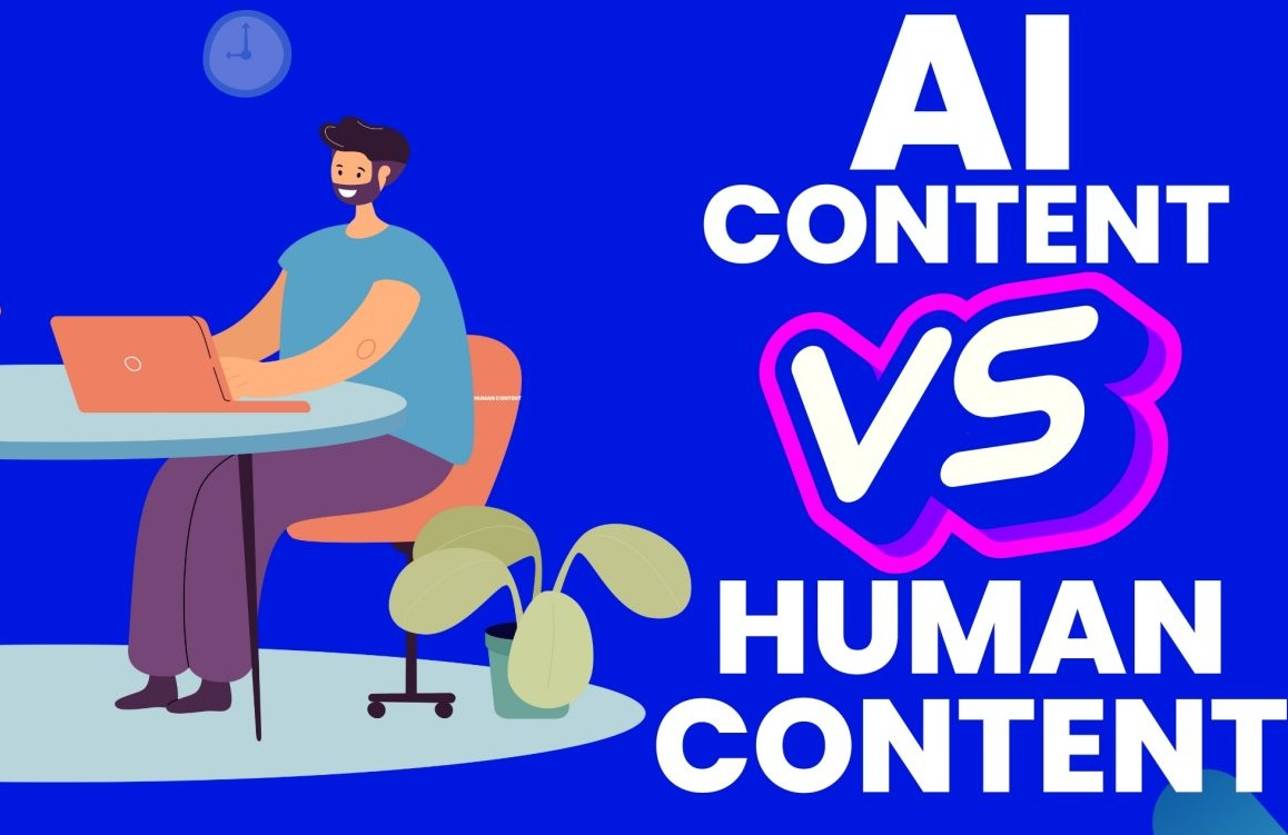Ah, the audacity of it all! Picture this: a beleaguered journalist, sitting at their desk, coffee gone cold, staring at a screen inundated with submissions from hopeful souls. Their crime? Trying to pass off AI-generated content as the real deal. As if we, the guardians of language and truth, wouldn’t notice!
Let’s set the record straight. AI has its place—calculating trends, managing data, even ordering your groceries. But writing? Writing is an art, a craft honed through years of toil, sweat, and yes, a fair share of tears. You can’t just slap together a few algorithmically generated sentences and expect it to pass muster.
Yet here we are, besieged by submissions from self-proclaimed wordsmiths who seem to think that a few lines strung together by a machine can slip past us unnoticed.
They clickity-clack away on their keyboards, summoning the digital muse, and out pops prose that’s as soulless as a spam email. Oh, the irony!
It’s not just about spotting the occasional misplaced comma or a run-on sentence. No, it’s about the essence of writing itself—the cadence, the rhythm, the subtle dance of words that only a human mind can orchestrate.
Real writers, real journalists, we can smell AI-generated content from a mile away. It’s like serving us a Michelin-star meal prepared by a microwave.
And yet, bless their hearts, these digital desperados continue to flood our inboxes with their AI-generated flotsam and jetsam.
- They think they’re clever, using tools meant to slip past detection algorithms.
- They think we can’t tell the difference between a soulful narrative penned by a human hand and a patchwork quilt stitched together by a cold, calculating machine.
Oh, we see you, dear submitters. We see your attempts at cunning, your hopes to game the system. But here’s a newsflash: humans write like humans, and AI writes like AI.
Spotting the Obvious Differences
Gather ’round, dear readers, as we delve into the delightful world of discerning between the genuine and the artificial in written content.
On one side, the rich tapestry of human thought and expression, woven with nuance and emotion. On the other, the mechanical hum of algorithms churning out sentences devoid of soul, like an overzealous robot reciting a grocery list.
Let’s start with clarity. Humans, bless our messy minds, write with purpose and clarity that reflects our humanity. Our words flow with intention, guiding readers through narratives that resonate on a visceral level.
AI, on the contrary, spits out sequences that might as well have been generated by a game of digital Mad Libs—predictable, formulaic, lacking that spark that makes you lean in and say, “Ah, now that’s a good read!”
Next, let’s talk about style. Real writers—those who bleed ink (or pixels, in this modern age)—have a style uniquely their own. Whether it’s the lyrical prose of a poet or the sharp wit of a columnist, their voice is as distinct as a fingerprint.
AI, however, is a chameleon without a shade card. It can mimic styles, sure, but it’s like trying to play Beethoven on a toy piano—technically possible, but the depth and finesse are sorely lacking.
And then there’s depth. Ah, depth—the abyss where the shallow waters of AI flail about helplessly. Real human writing dives deep into the complexities of life, exploring themes with empathy and understanding.
It’s not just about stringing words together; it’s about connecting dots, weaving narratives that tug at heartstrings and challenge the mind. AI content, on the other hand, barely skims the surface, regurgitating information without context or meaning.
Let’s not forget creativity. Real writers are the architects of imagination, constructing worlds with words that transport you to places unknown. They paint with language, crafting metaphors and similes that evoke emotions and provoke thought.
AI, in contrast, operates within the confines of programmed patterns. It’s like trying to paint the Mona Lisa using only primary colours—you might get something resembling a smile, but the soul is conspicuously absent.
And lastly, authenticity. There’s an authenticity to human writing that can’t be replicated. It’s in the imperfections, the quirks, the moments of vulnerability that make us human.
AI-generated content, by its very nature, lacks this authenticity. It’s sterile, sanitised, devoid of the messy beauty that makes literature a mirror reflecting the human condition.
No amount of digital sleight of hand can mask the absence of that human touch—the spark of creativity, the depth of insight, the idiosyncrasies that make writing truly come alive.
So, the next time you contemplate sending in your AI-generated masterpiece, remember this: you’re not fooling anyone. Behind every byline, every carefully crafted article, there’s a real person pouring their heart and mind into their work. And that, my friends, is something no algorithm can replicate.
AI Content vs. Human Content
Allow me to dissect the perennial debate between AI-generated content and the heartfelt prose of human creators.
- Emotion: When it comes to evoking emotions, human content reigns supreme. Artificial intelligence, for all its prowess, cannot replicate the depth and subtlety of human emotions. The realisation should hearten writers, for content devoid of human emotion risks losing its soul.
- Readability and Structure: Another area where human content excels is in sentence structure. AI-generated content often suffers from lengthy sentences that can hinder readability. Writers using AI tools may find themselves needing to refine and condense the text to maintain clarity and engagement. Remember, concise content holds its value, ensuring readers stay captivated.
- Complexity: Here’s a critical distinction—AI struggles with generating content that necessitates user feedback, perspectives, or specific guidelines. Take tutorials, for instance. Crafting a comprehensive tutorial requires insights and guidelines from domain experts to ensure accuracy and usability, something AI cannot autonomously provide.
In essence, while AI offers remarkable capabilities in content creation, it is the human touch that imbues content with authenticity, emotional resonance, and practical wisdom. As we harness the power of AI, let us cherish and cultivate the unique strengths that define human expression, ensuring that our content not only informs but also inspires and connects with our audience on a profound level.
AI Content Example
Behold, dear readers, an intriguing specimen that has landed in my digital lap—an article shrouded in mystery, hailing from the depths of anonymity.
It arrived unceremoniously from the inbox of a nondescript Gmail account holder, offering no clues about his origin while providing a so called “content sample” for a guest post pitch.
Upon closer inspection, it becomes apparent that this piece bears the unmistakable imprint of AI. Yes, ChatGPT, that digital muse of the modern age, seems to have lent its algorithms to craft these words.
The attempt, it seems, was made to strip away the telltale signs that typically betray AI-generated content—those predictable patterns and formulaic structures. Yet, like a poorly disguised marionette, the essence of its artificial origin remains glaringly evident.
The lack of flair, that intangible essence that distinguishes human creativity, is palpable. It reads like a patchwork quilt of ideas stitched together by lines of code rather than the hand of a discerning wordsmith.
Despite the effort to sanitise and camouflage its digital roots, the mechanical undertones persist, revealing the cold precision of AI behind the facade.
Ah, but let us not scoff at the attempt. It serves as a poignant reminder that while AI strives to emulate human expression, it cannot replicate the ineffable nuances that define our craft.
The rhythm, the cadence, the subtle interplay of words that reflect our unique perspectives and experiences—all elude the grasp of algorithms.
Upon scrutiny, it becomes evident that the genesis of this composition lies within the realm of artificial intelligence. Indeed, the fingerprints of ChatGPT—the digital scribe of our era—are discernible here.
An attempt was made, perhaps, to cleanse this text of the tell-tale markers that typically betray AI’s handiwork. Yet, despite the effort to sanitise and veil its origins, the absence of genuine substance persists.
This is no repository of fresh insights or data-driven revelations. It lacks the vibrancy and authenticity that distinguish human discourse—those flashes of brilliance that illuminate the path forward or challenge our perspectives.
Instead, it reads like a mosaic of words meticulously crafted by algorithms, devoid of the organic flow that characterises human thought.
Indeed, the absence of substantive insights underscores a fundamental limitation of AI-generated content. While it may mimic the structure and syntax of human language, it falters in capturing the essence of genuine discovery and innovation.
It also regurgitates familiar tropes and platitudes, recycling words without adding meaningful value or advancing our understanding.

How AI-Generated Content Is Poisoning The Internet
What a whirlwind year it has been for artificial intelligence. If you’ve traversed the internet, chances are you’ve encountered images birthed by AI behemoths like DALL-E 2 or Stable Diffusion, or stumbled upon quips, essays, or prose penned by ChatGPT—the latest incarnation of OpenAI’s formidable GPT-4 language model.
At times, the hand of AI in creating visuals or text is unmistakable. Yet increasingly, the output from these models can cunningly masquerade as the handiwork of a human.
These large language models are particularly adept at crafting narratives that sound plausible, though beneath the surface, they may harbor falsehoods.
While this may seem harmless in jest, the implications grow weighty when AI models are entrusted with delivering unfiltered health guidance or disseminating critical information.
The ease with which AI can churn out volumes of misinformation, abuse, and spam threatens to distort our collective understanding and erode our grip on reality. It poses significant concerns, especially in the context of elections and other pivotal societal events.
Can Readers Tell the Difference Between AI and Human-Generated Content?
Despite widespread confidence in their ability to spot machine-generated prose, our research unearthed a surprising truth. A staggering 53 percent of participants struggled to distinguish AI-generated content from its human-written counterpart. Oh, the irony!
The discernment prowess of readers, however, varied depending on the genre. Generally, within a mere three minutes of engagement, most could pinpoint the robotic origins of AI content.
The keenest noses sniffed out AI with a commendable 68% accuracy in the world of fashion and style, while the financial realm posed a slightly lesser challenge at 56%.
Curiously, the scent of authenticity was strongest in articles about food and drink, where 45% of readers caught the unmistakable whiff of human touch. Fashion and style, on the other hand, proved to be a trickier terrain, with only 32% confidently identifying human authors.
Qualitatively speaking, both AI and human-generated articles stood shoulder-to-shoulder in many respects. Strangely enough, AI entries garnered higher marks for enjoyability, relatability, and even—oh, the paradox—personality.
Now, if you’ll excuse me, I have a stack of submissions to sift through—some genuine, some not-so-genuine. But fear not, for I, the intrepid journalist, armed with wit and discernment, shall separate the wheat from the chaff.
Because in the end, quality writing isn’t just about words on a page—it’s about the human spirit shining through, undeniably and irreplaceably.







